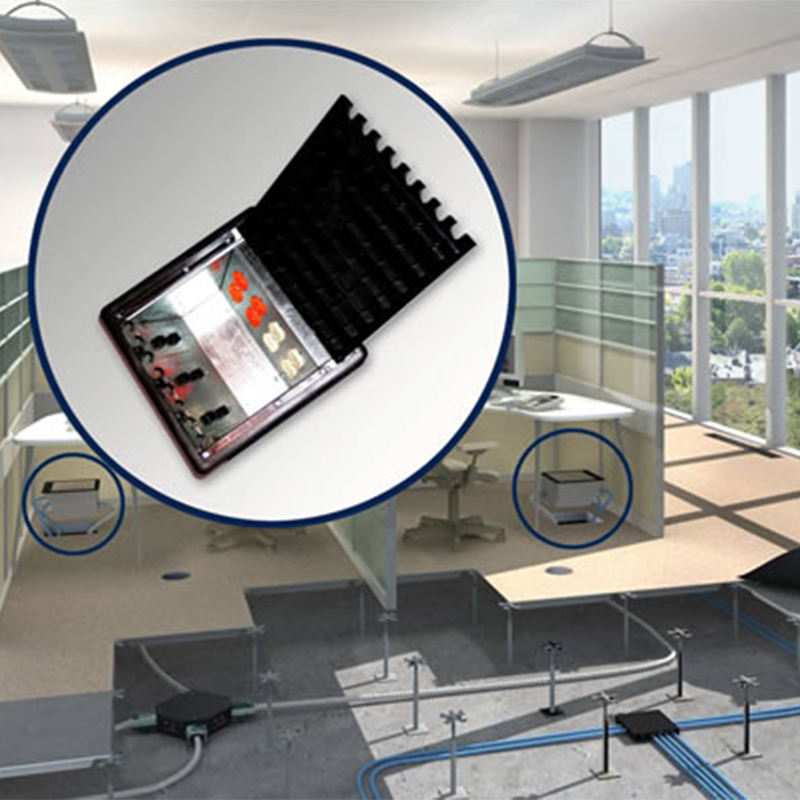Home / Underfloor Systems / Zone Wiring
Underfloor Systems
Zone Wiring
The use and flexibility of a raised access floor system provides for advanced space planning by distributing power, voice and data cabling in the interstitial space between the raised floor and subfloor. Zone wiring systems for power and telecommunications with ‘modular’ plug and play capability allow for further flexibility to quickly and economically reconfigure the work environment, for optimum response to organizational and technological changes.
What is modular wiring?
Modular wiring is a pre-cut, pre-tested, connector-to-connector coupled cabling system that allows for easy installation and flexibility, eliminating the laborious process of laying conduit, pulling wire and hand terminating connectors in the field. Due to their plug and play nature, total installed costs can be reduced 30% or more as compared to traditional pipe and wire methods.
Using modular wiring, you can easily reconfigure your existing office space by simply unplugging the power, voice and data components under the raised floor, moving them to another location and reconnecting them. The result? Lower cost throughout the life-cycle of the building.
And there are potential tax benefits as well—because they can be moved and relocated, they are considered tangible, personal property and can qualify for accelerated depreciation tax benefits.
Power
Modular wiring systems for power incorporate pre-manufactured, pre-tested assemblies, fabricated in a highly controlled manufacturing facility, to your precise specifications.
General purpose and/or isolated ground power are distributed throughout a zone via the typical system components: metal clad homerun cable runs from the electrical panels to the zone distribution box; metal clad extender cables carry power out to secondary/splitter distribution boxes; the secondary boxes then deliver power to workstation outlets.
Voice & Data
Like modular power systems, modular wiring systems for telecommunications distribute voice and data throughout a zone distribution concept. A telecommunications homerun cable (with copper or fiber optic cable) runs from the telecom closet to a zone distribution box; low voltage extender cables then bring service from the box to individual user ports.


